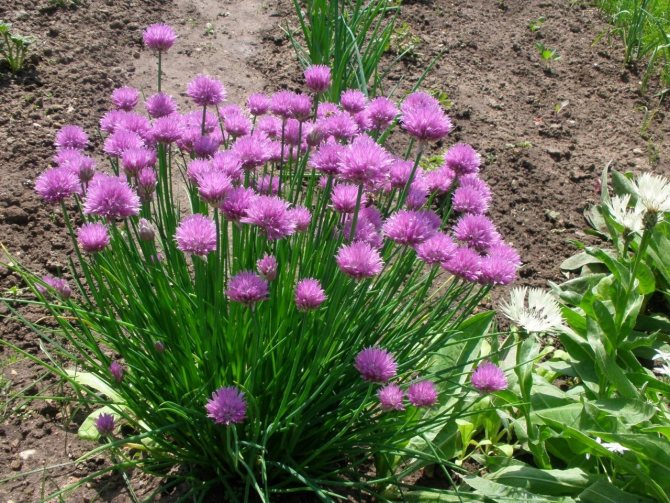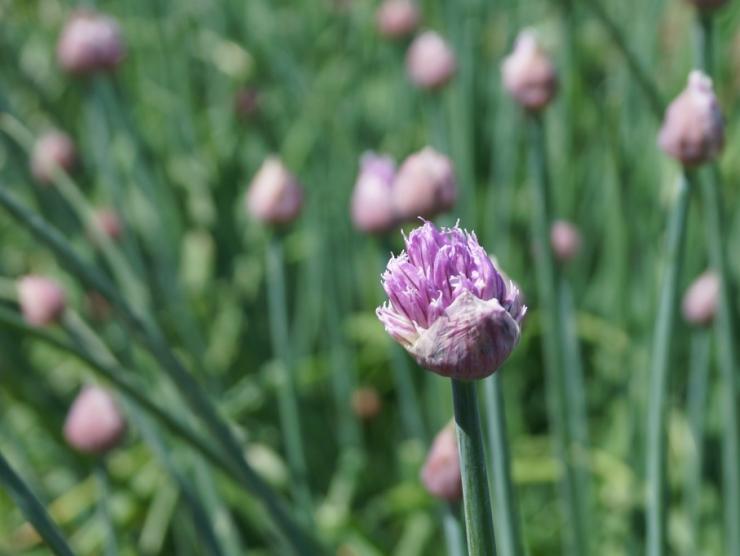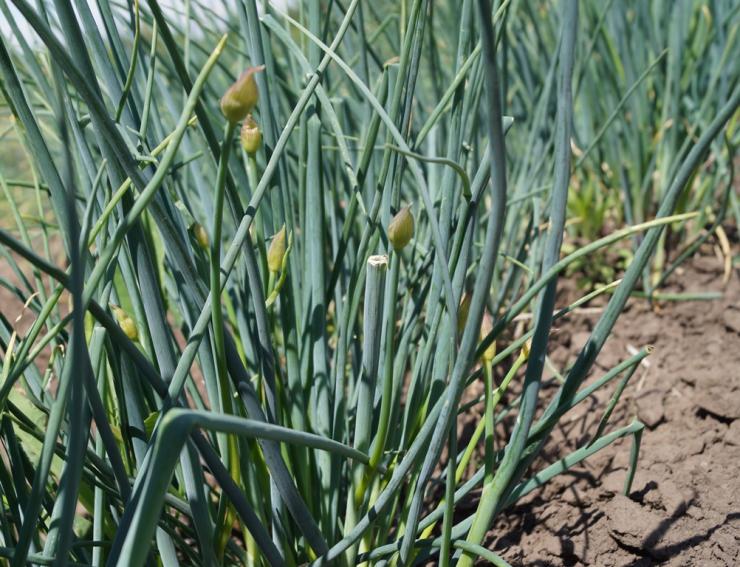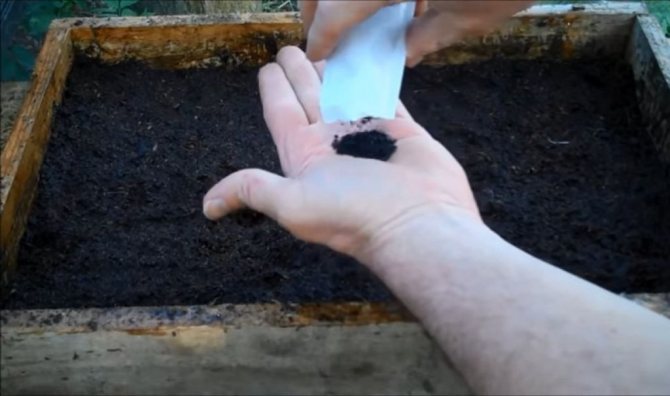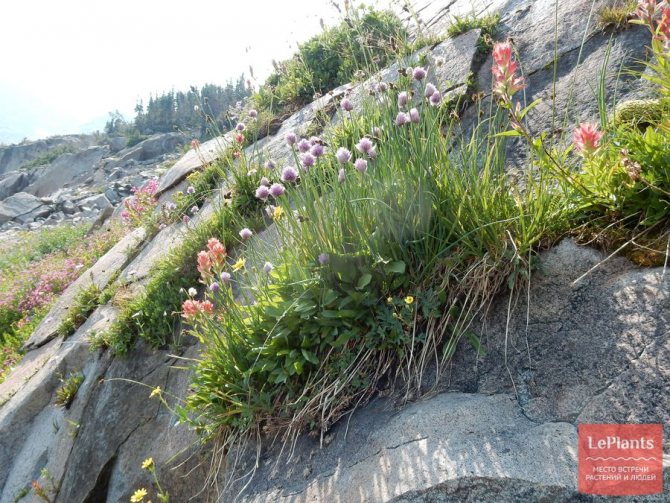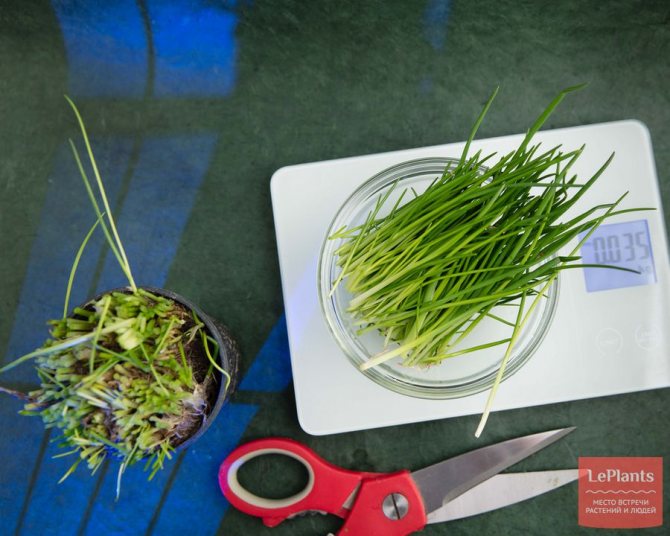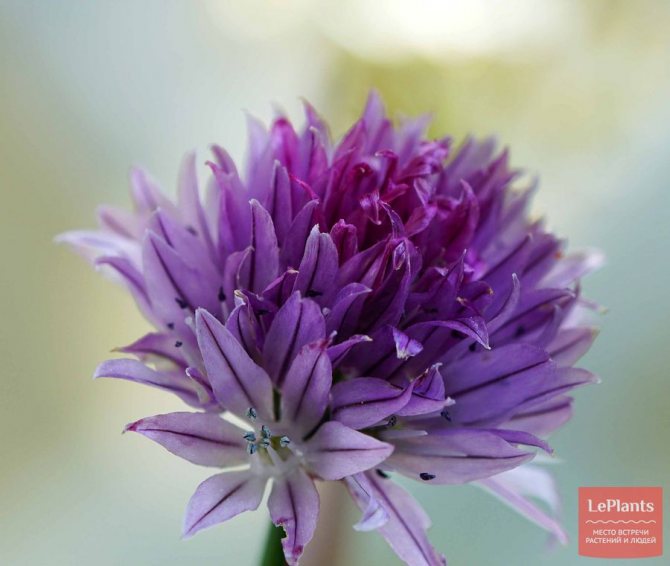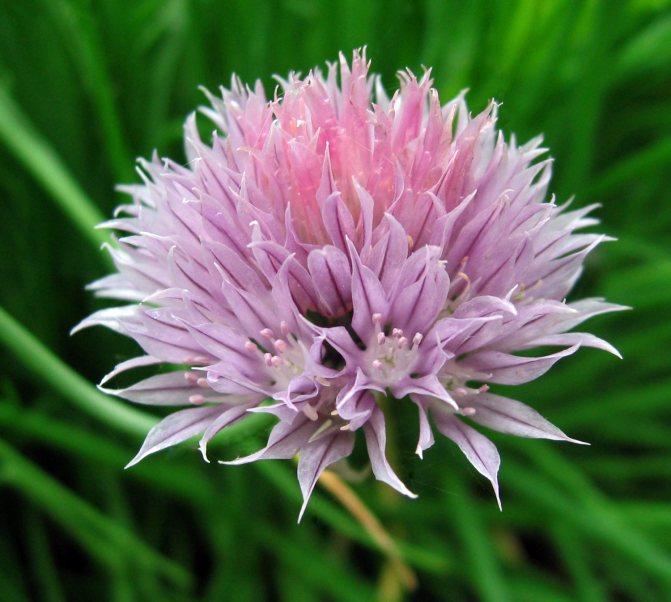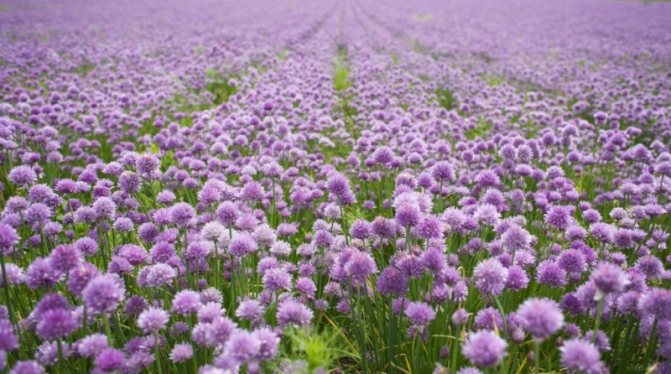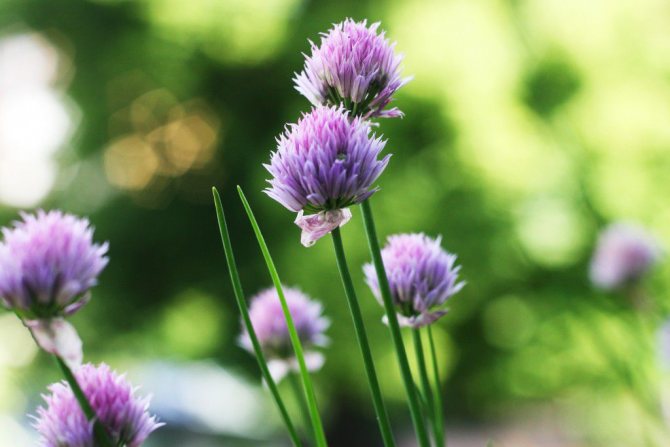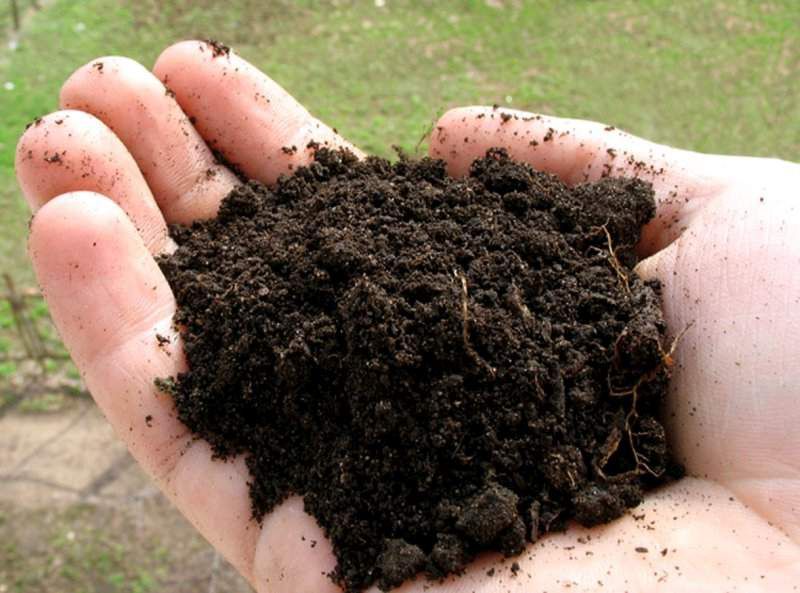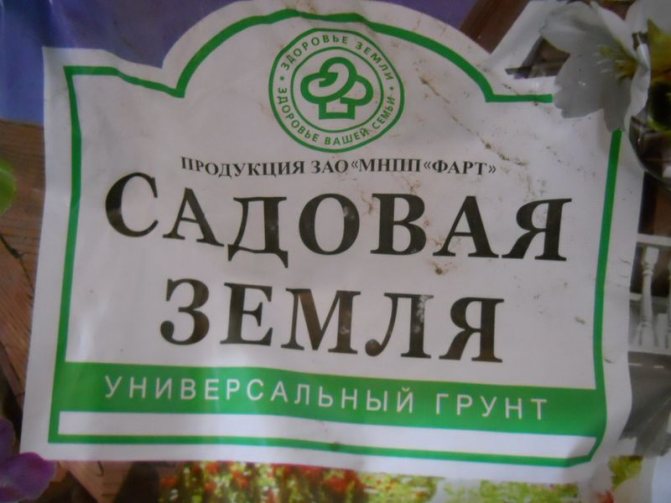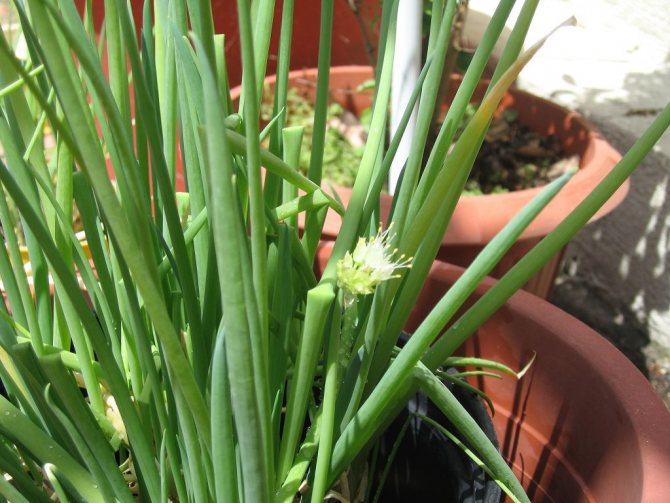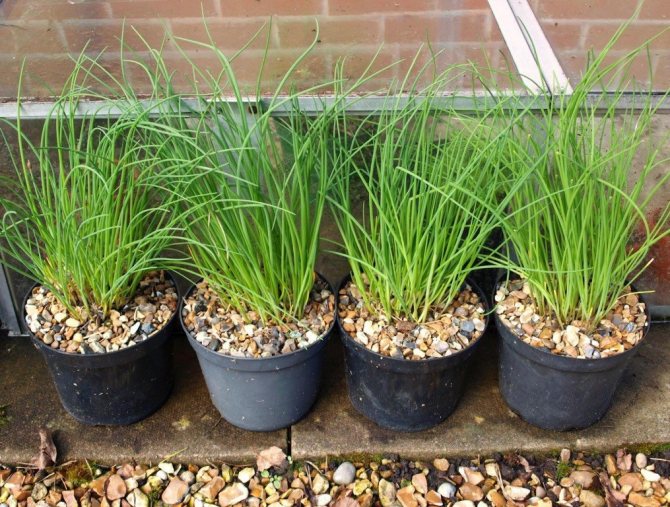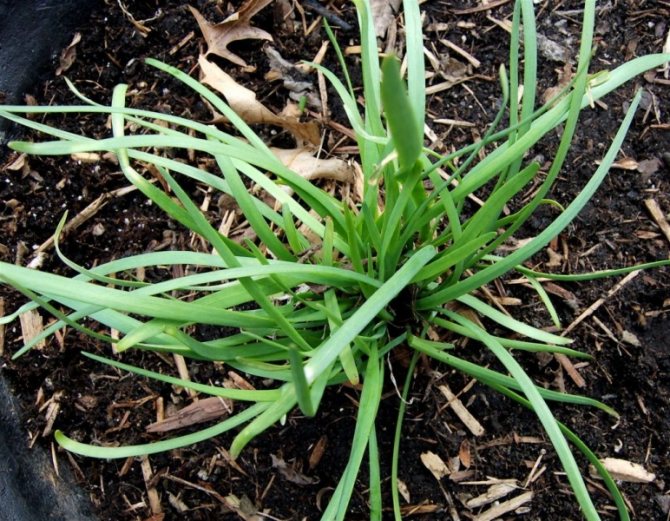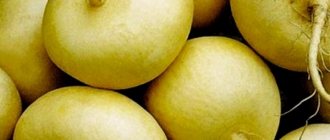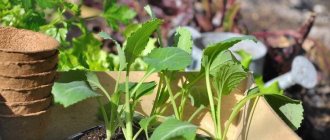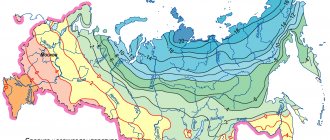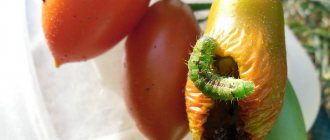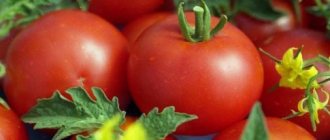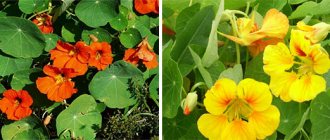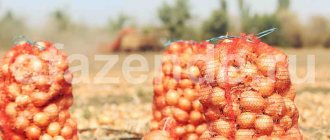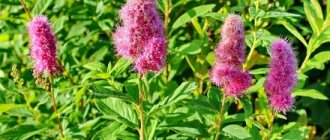What is chive bow
Chives is a perennial, herbaceous plant that can be grown in the garden as an annual or biennial crop. The name of the plant can be translated from German as "cut onion". The plant is resistant to frost, so it is often planted in countries with a temperate and cool climate, right in the open air.
Interesting!
The people also call chives, chives, tribulka, skoroda, Siberian or bush onions. In Asia, it is also called sokh, sogan or khali.
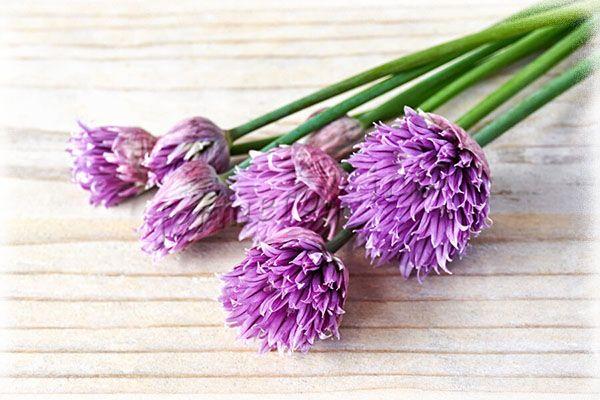
Chives flowers can be white to purple
The root part is an abundance of small onions in the amount of up to 20 pieces. Their color can be from white to purple. All of these bulbs are attached to a common, short root. From the second year, each bulb forms a long arrow with a peduncle at the top. Inflorescences are umbellate balls of white, purple or even blue.
The ground part of chives is represented by a false stem and thin tubular leaves of a rich green color. Feathers can be in the range of 25-45 cm, depending on growing conditions, plant age and variety. They are about 5-8 mm wide. Feathers are usually thickened at the base. In about 3-4 years, chives forms a lush bush of 40-100 stems and several inflorescences.
Chives and onions have a pleasant taste, without bitterness. They are similar to other types of onions, but more delicate, with a strong aroma.
The benefits and harms of chives
Check out these articles as well
- Shire horse
- Katum sheep
- How to grow eggplant outdoors
- Oryol trotter
The beneficial properties of chives are due to its composition. This onion contains a lot of vitamins (A, B, C, E, K) and minerals. The amount of sugars is not more than 3%. There are many amino acids in the leaves of the culture (histidine, tryptophan, lysine, methionine, arginine). This culture also contains a lot of carbohydrates and proteins.
With the regular use of onion skoroda, its positive effect on the human body is observed.
- Chives improves appetite and intestinal secretory function.
- It has a positive effect on the work of the gallbladder, kidneys, cardiovascular system.
- It removes parasites from the body and has an antimicrobial effect.
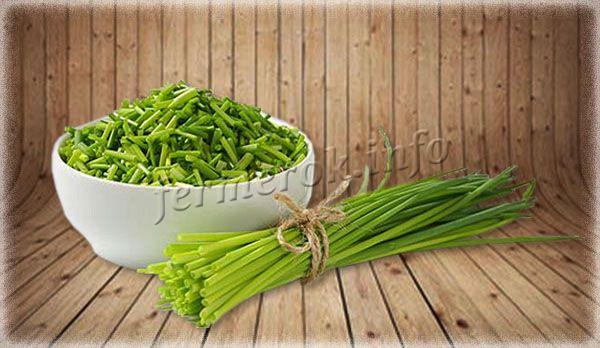

With regular use of Chives, there is a general improvement in the body.
It is often used in the treatment of atherosclerosis, worms, stool problems, hemorrhoids, hypertension, throat and lung diseases. Traditional medicine is used chives to treat diseases of the reproductive system (men, women), stomach.
Interesting!
The benefits and harms of chives have been well studied by scientists. With its regular use, there is a general improvement in the state of the body, an increase in immunity, and the appearance of hair and skin improves.
There are some contraindications for chives.
- It can cause harm to the body with individual intolerance.
- With ulcers of the intestines, stomach, pancreatitis, it is not recommended to use chives. Because it can be harmful.
- It is contraindicated to use it for liver cirrhosis or hepatitis.
- With regular tachycardia, diseases of the cardiovascular system, you should not use chives, it can aggravate the condition.
- Regular migraines are also a reason to stop eating onions.
With the wrong or excessive use of chives, heartburn, headache, nausea, diarrhea can occur.
Generalization
Loamy and sandy loam soil should be selected for cultivation. The plant bears fruit well in one place without transplanting up to 6 years. There are three ways to grow a crop: sowing seeds, vegetative method, seedlings.
If, when growing on the site, the plant is covered with dense polyethylene in the fall, then you can enjoy the green juicy shoots until frost. Caring for chives is very simple and does not require a lot of energy. The plant is not at all demanding, but if you feed it with fertilizers once a month, it will thank you for an even larger harvest.
Unlike regular onions, this sibling has a tangy taste and spicy aroma. For the most part, it is grown for the greens that are used to prepare various dishes. Also, the cultivation of this onion is carried out in pursuit of aesthetic goals, it is often used in landscape design. The benefits of this product for the human body are simply invaluable.
In addition to the fact that the plant is unpretentious in care, another plus is its persistent immunity. Onion practically does not get sick, and therefore it is a pleasure to grow it. Of all the known diseases and parasites, it can be affected by powdery mildew, rust and onion thrips. Getting rid of them is pretty easy. The main preventive method is compliance with the basic rules of care. If you are interested in chives, then growing from seeds or in any other way is the ideal solution.
Growing chives
Onions are planted in kitchen gardens, orchards, in flower beds, because in addition to its taste, it is valued for its decorative appearance. It is best planted in partial shade where it can get adequate watering and little sunlight. The best predecessors are tomatoes, various types of greens, potatoes, radishes. Tomatoes and carrots should be recommended as neighbors for this culture.
Important!
Planting chives next to beans, peas, cabbage and beets is not recommended.


Plant chives in rows, placing the bulbs at a distance of 25-30 cm
Growing chives can be done in different types of soil. But if the soil is very heavy, before sowing onions, it is worth adding a bucket of humus (compost) and sand to each square of the plot. Sowing of onions is carried out in the spring (around the beginning of May). Onions are planted in rows, placing the bulbs at a distance of 25-30 cm. The row spacing can be 45-50 cm. If seeds are used, and not bulbs, then they are embedded in the ground to a depth of 1 cm, without observing the distance between the seeds.
The first shoots can be expected in 1-1.5 weeks. After the appearance of 1 real leaf, thinning can be carried out. It is usually done by sowing onions with seeds. Leave at least 10 cm of free space between the plants during thinning.
How to care
It's pretty easy to grow a chisel. Care consists of:
- weeding (in the first season);
- watering;
- loosening;
- top dressing.
It is better to trim the arrows. Because of them, the quality of greenery decreases.
Watering
Autumn chives are moisture-loving, so it is important to create comfortable conditions for them. With a lack of water, the leaves turn yellow, coarse and become unsuitable for use in cooking.
So much water is poured under the bushes so that the soil is completely saturated. After watering, the ground is gently loosened.
Mulch helps to reduce liquid evaporation.
What should be fertilized
For active growth of green mass, top dressing is systematically carried out:
- urea (15–20 g / m²);
- superphosphate (20-30 g / m²);
- potassium chloride (10 g / m²).
The minimum frequency is 2 times per season. On depleted lands, the procedure is carried out 4-5 times.
Diseases and pests
Onion yield is significantly reduced when damaged by diseases such as:
- peronosporosis - greenish, gradually growing spots appear on the leaves. Because of this, they turn yellow and die off. Sunlight and dry air prevent or reduce symptoms. It is recommended to disinfect seeds before planting by heating at + 40 ... + 42 ° C for 8-12 hours;
- neck rot - the bulbs soften, become watery, then dry out. In order to avoid infection, it is necessary to observe the fruit change and growing rules;
- rust - appears in the form of characteristic brown spots. Affected plants must be removed and destroyed. The plantings are treated with Topaz or Falcon preparations.
The most dangerous pests are onion flies and thrips. They feed on cell sap and onion pulp. Control measures: use of disinfected planting material, treatment of plants with 0.2% chlorophos.
Chives care
We recommend reading our other articles
- Tomatoes in their own juice for the winter
- Keeping ducks at home
- Apple varieties for the Leningrad region
- Description of the breed Manchurian quail
Among many other types of onions, chives are distinguished by their easy maintenance and high, stable yield.
- Watering should be done in moderation, but abundant. This culture will not grow long without moisture. It is important that the ground is always slightly damp, not dry out. So during a drought, much more water is required to be applied to the land. If there isn't enough water on the onion, the greens will become tough and taste bad.
- Loosening the soil is the most important part of caring for chives in the first year of crop growth. It is necessary to break up the coarse clods of earth and the upper crust so that it is easy for young sprouts to make their way to the sun.
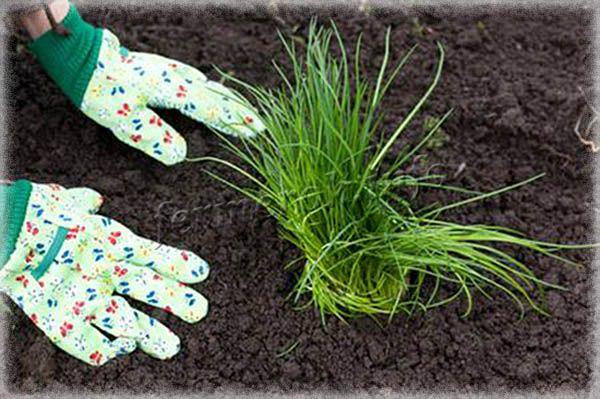

Loosening the soil is the most important part of caring for chives in the first year.
- Weed removal is carried out during the weeding of the beds. And so that weeds grow less, after the emergence of onion shoots, you can mulch the beds.
- From the second year of growth, chives can be fertilized regularly. The first feeding is carried out after the leaves have stretched up to 25 cm.It is best to use ash for these purposes. It is simply scattered over the garden or plant. You can also make a solution of droppings (1:20 with water) or humus (1:15). But after application, it is imperative to water the plant from above with water.
- Closer to autumn, you need to cut off all dry parts of the plant. So that diseases and pests do not start in them.
Interesting!
Many pests, such as aphids and cruciferous fleas, cannot tolerate the smell of chives. Therefore, it is recommended to sow it in several places on the site, to prevent the appearance of large colonies of pests.
Scope of distribution
The homeland of chives are considered to be the northern regions of China and Mongolia, Siberia (eastern part). In the wild, it is found in India, Asia (Central), North America and Europe.
Chives quickly adapt to their habitat. And if we take into account the fact that it does not require special care, then it can be grown almost everywhere. Will ideally grow in temperate climates.
Growing a plant in drought-prone areas requires constant watering.
In order for chives to constantly produce young greens, gardeners and gardeners are advised to regularly cut the feathers while it is young and full of vitamin. Otherwise, old leaves lose their qualities.
Harvesting and using the crop
Chives can be cut 3-4 times a year, or as needed. It is advisable to do this when the greenery grows 25 cm or more. The first cut should be in mid-May, and the last at the end of September. Thus, the culture will be able to recover before frost.
Chives, like most other types of onions, have different beneficial properties. It is used as a spice or ingredient in many dishes.It is most beneficial when consumed fresh, but it is also suitable for cooking, frying, drying and even freezing. Often it is put in the first and second courses, added to sauces, dressings, gravies and pastries.
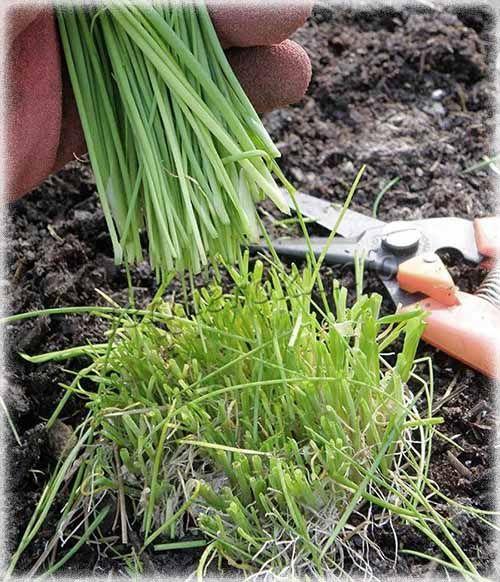

Chives can be cut 3-4 times a year or as needed
Important!
Chives are poorly stored, like any other greens, so you should not collect them for future use. And so that it does not deteriorate longer, it is recommended that after collection, immediately put it in a refrigerator or similar cool room.
Chives are very often used in the preparation of medicines and cosmetics. It helps not only with diseases of various organs, but also with skin diseases. With the help of effective ointments, compresses, juice from this onion, you can:
- cure acne;
- remove freckles;
- improve hair condition;
- get rid of dandruff;
- cure corns;
- help restore moisture balance to dry skin;
- cure the fungus.
Onions are used in medicine and cosmetology separately or in combination with other ingredients. Depending on what effect you want to get from it, it is mixed with honey, eggs, lemon juice, sugar or other ingredients.
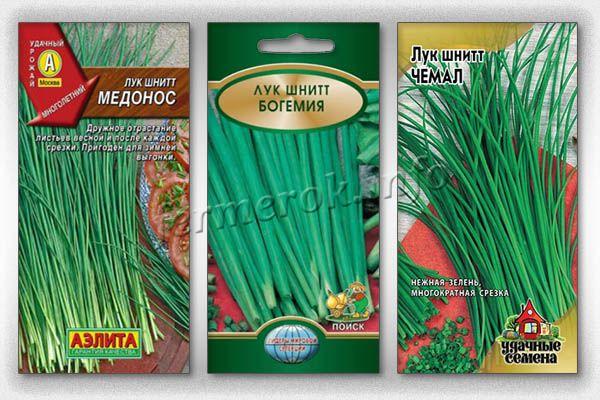

Popular varieties of chives
Top dressing
A site for planting onions begins to be prepared in the fall. It is dug up and mineral and organic fertilizers are applied. It is necessary to mix 5 kg of manure, 25 g of superphosphate, 17 g of potassium salt. Ammonium nitrate is introduced in the spring. The supply of nutrients is enough for the entire first year of plant development.
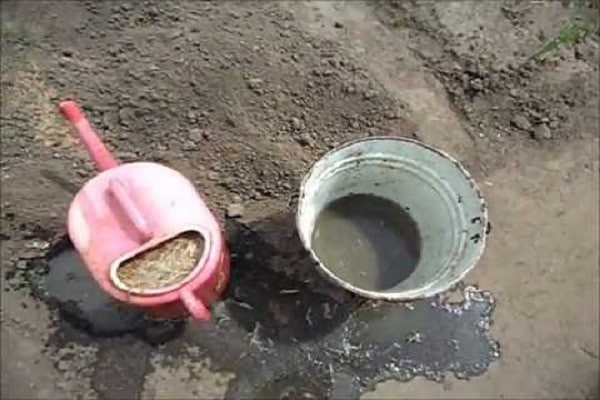

In the second year of growing and caring for the crop, it is necessary to start fertilizing after the first cut of the greenery. Cut the greens when the feathers reach a height of 30 cm. You can use wood ash, slurry of mullein or bird droppings. From mineral fertilizers, you can choose nitrophoska, azofoska. The following dressings are carried out after each cut of greenery.
The main pest of chives is the onion lurker. To reduce the risk of attack by insect pests, seed treatment and timely feeding will help. Additional nutritional components increase the plant's immunity.
See also
How to deal with onion pests and what should be done for treatment?
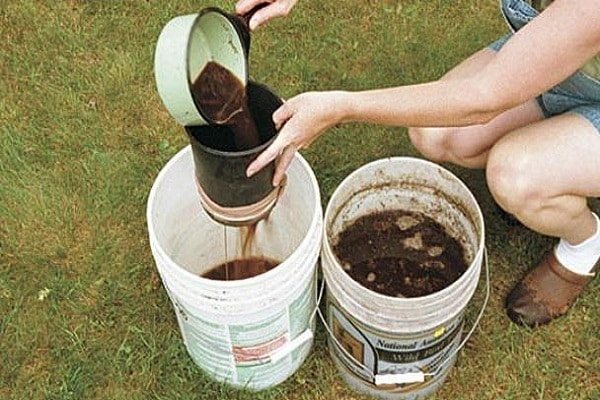

Popular varieties of chives
There are many different varieties of chives on the market. They differ in ripening period, taste, some external qualities. Among the most popular types of chives for central Russia and more northern regions are Chemal, Prazhsky, Elvi.
The varieties "Bohemia" and "Medonos" are recommended for cultivation as perennial crops. If you need a variety for cultivation as one-year or two-year, you should pay attention to "Chemal" or "Prague". At the same time, it is the "Prague" chives that provide early, juicy greens. The Khibinsky variety can be recommended as a delicious chives with decorative qualities. It produces a tall arrowhead with beautiful, purple blossoms. And the Forescate and Album varieties produce white and bright pink inflorescences. From May to late autumn, they are very beautiful, elegant, so they are often planted in flower beds, along fences, curbs.
Chives are a useful culture used in cooking, medicine and cosmetology. It has excellent taste and rich aroma. It is sometimes also grown as an ornamental species. And with the right care, it will also yield large yields.
Application in landscape design
Many people grow chives in their summer cottage as a decoration. Thanks to rich greenery and original purple inflorescences, it is placed:
- along the tracks;
- in rockeries;
- mixborders;
- along the edges of the flower beds.
Chisel is especially appreciated because it blooms brightly in shaded places where other types of onions do not take root.To maintain an attractive appearance, the leaves are periodically trimmed.
The following varieties are suitable for use in ornamental gardening:
- Moscow;
- Border;
- Elvi.
The peak of decorativeness is characteristic of the flowering period.



